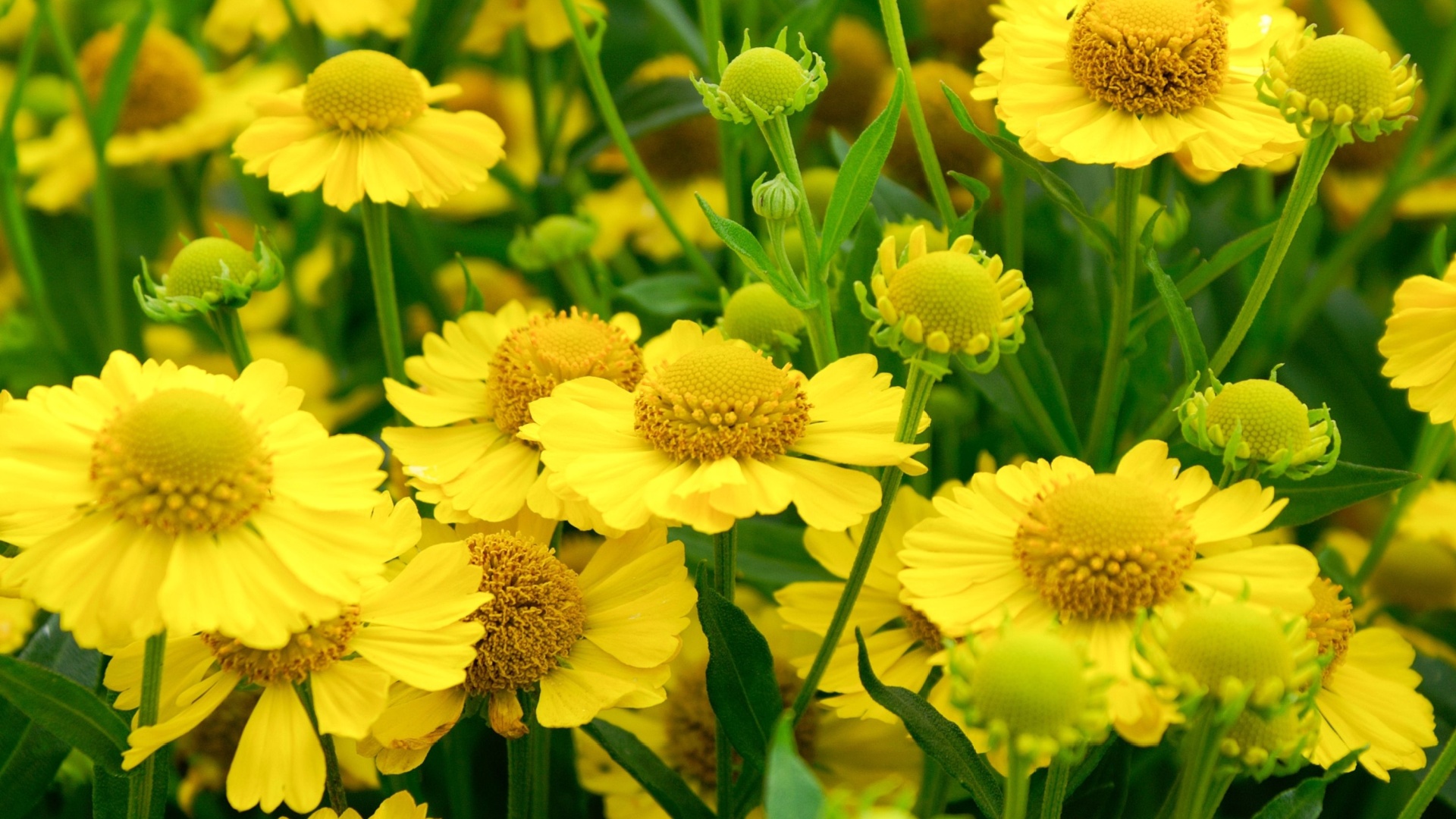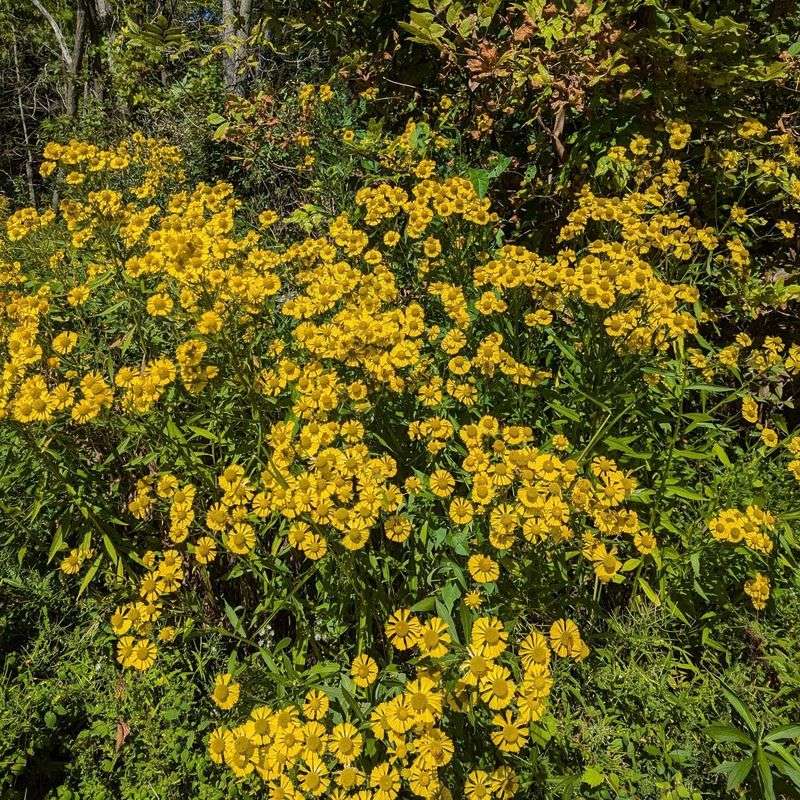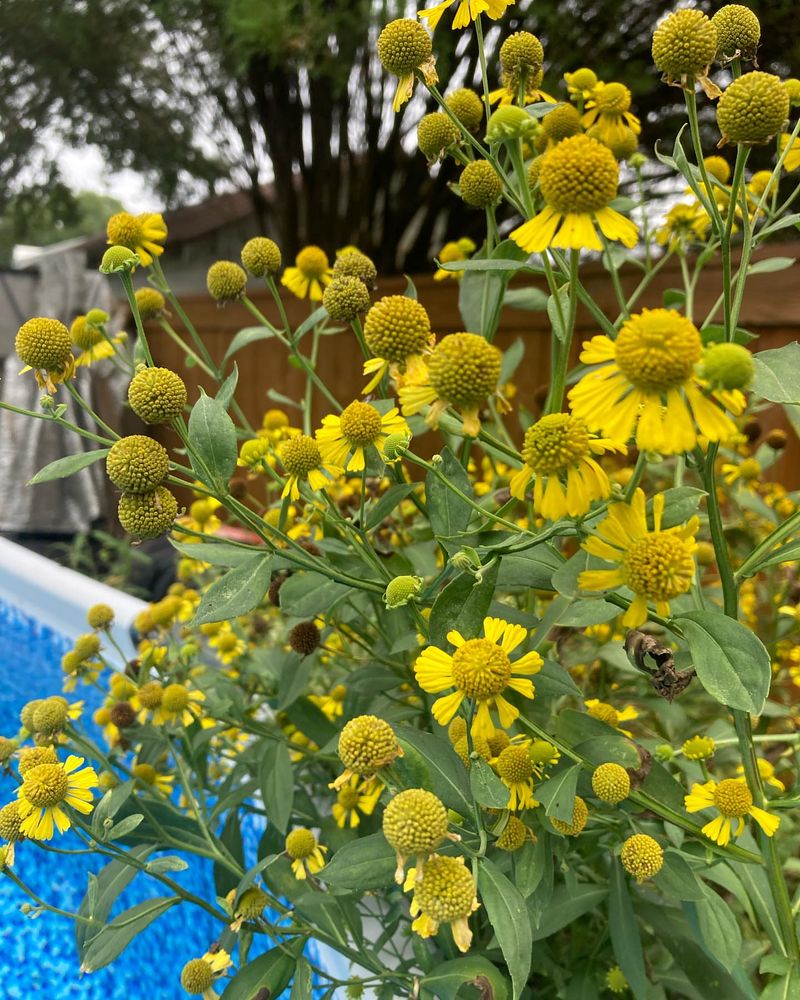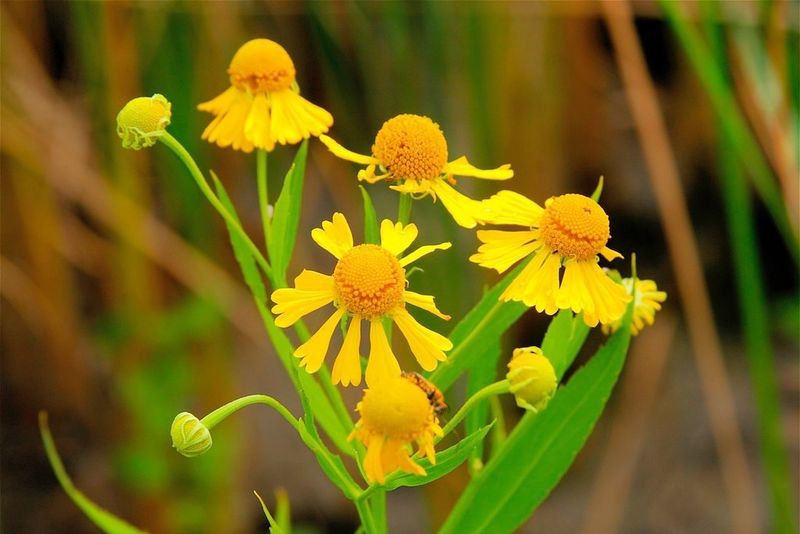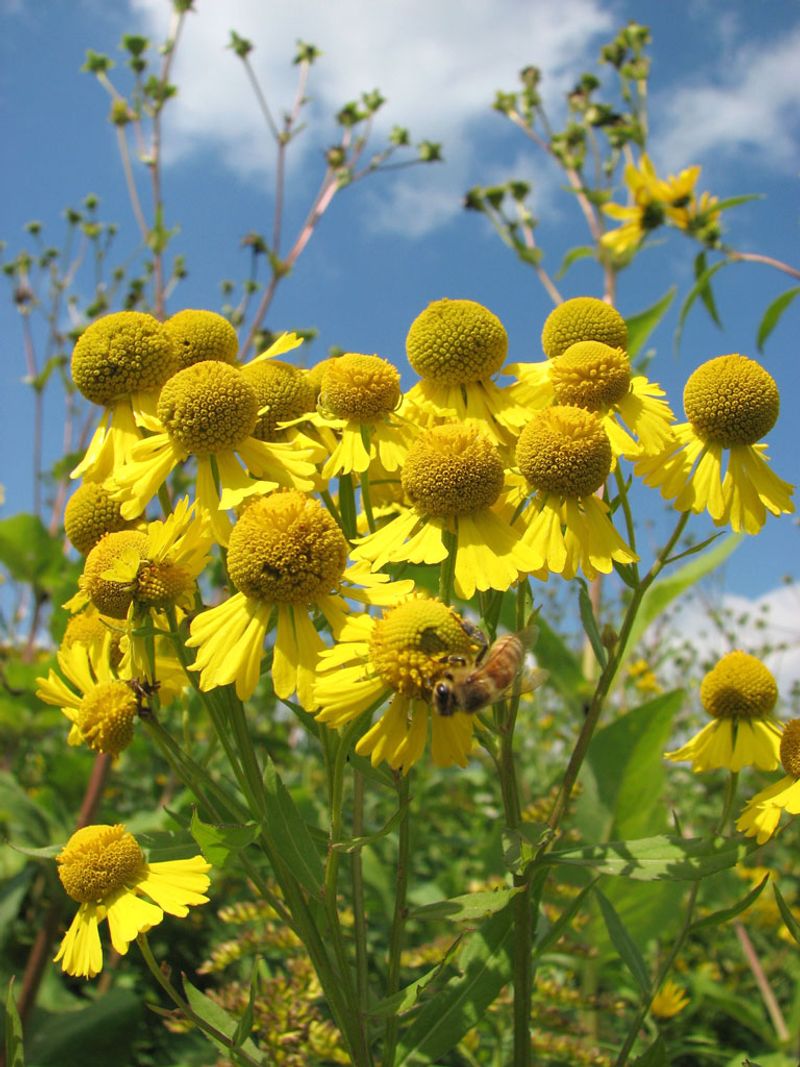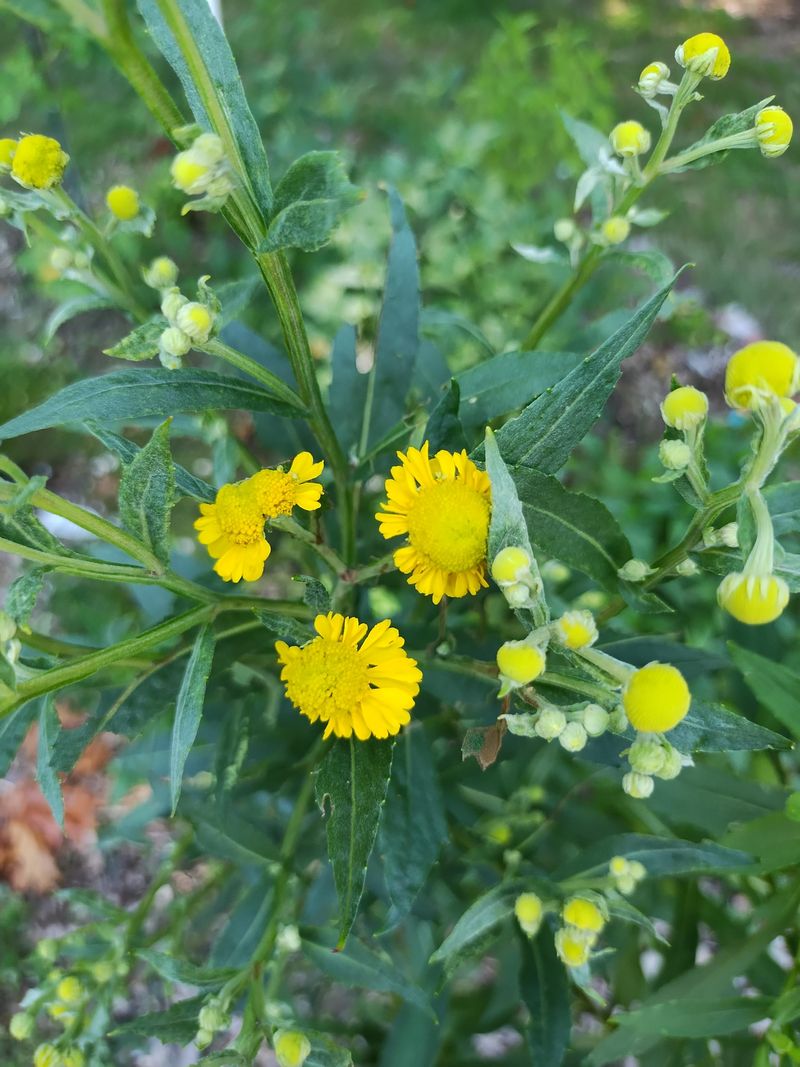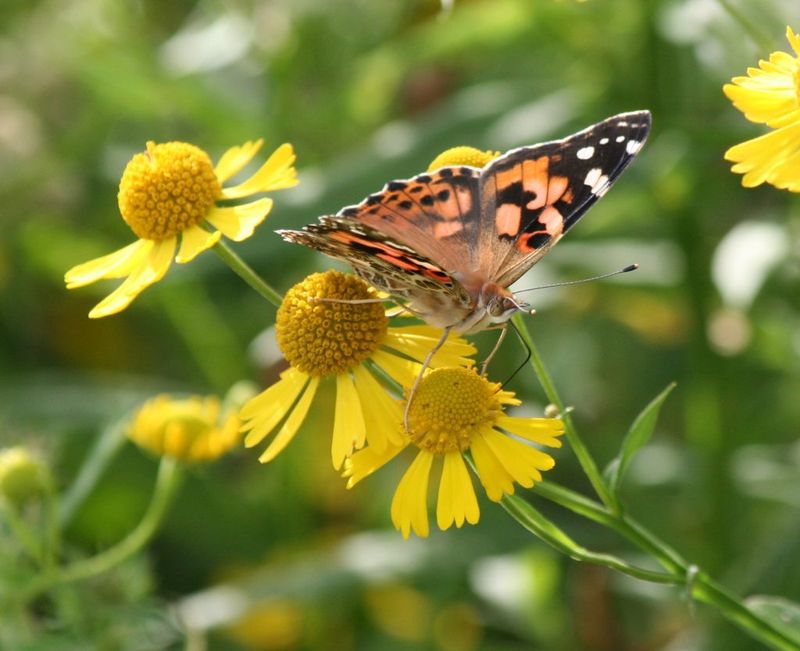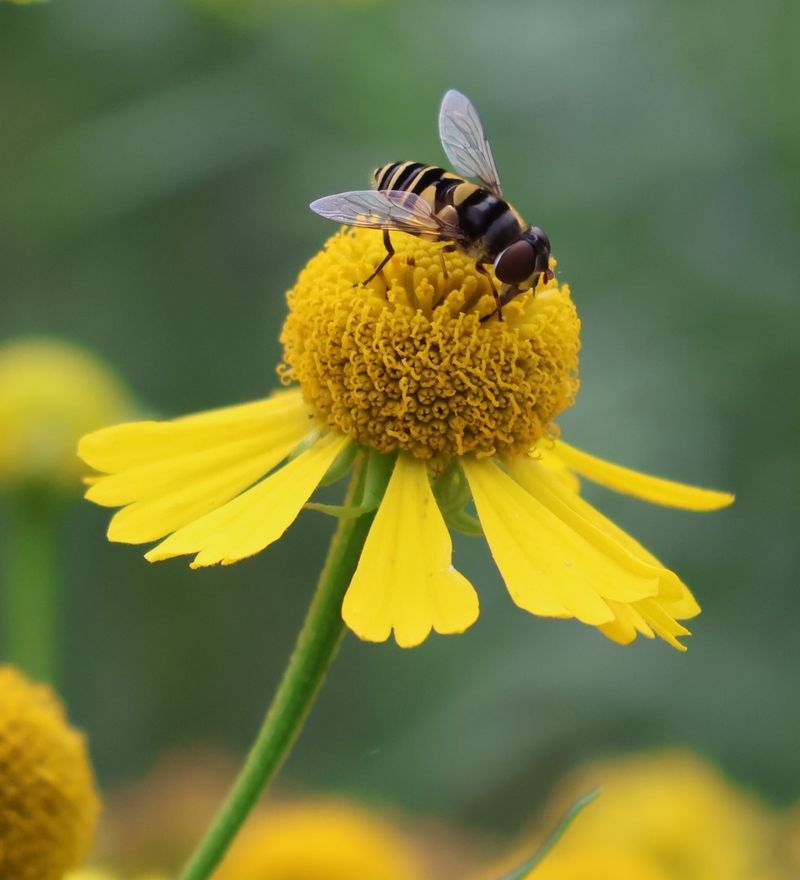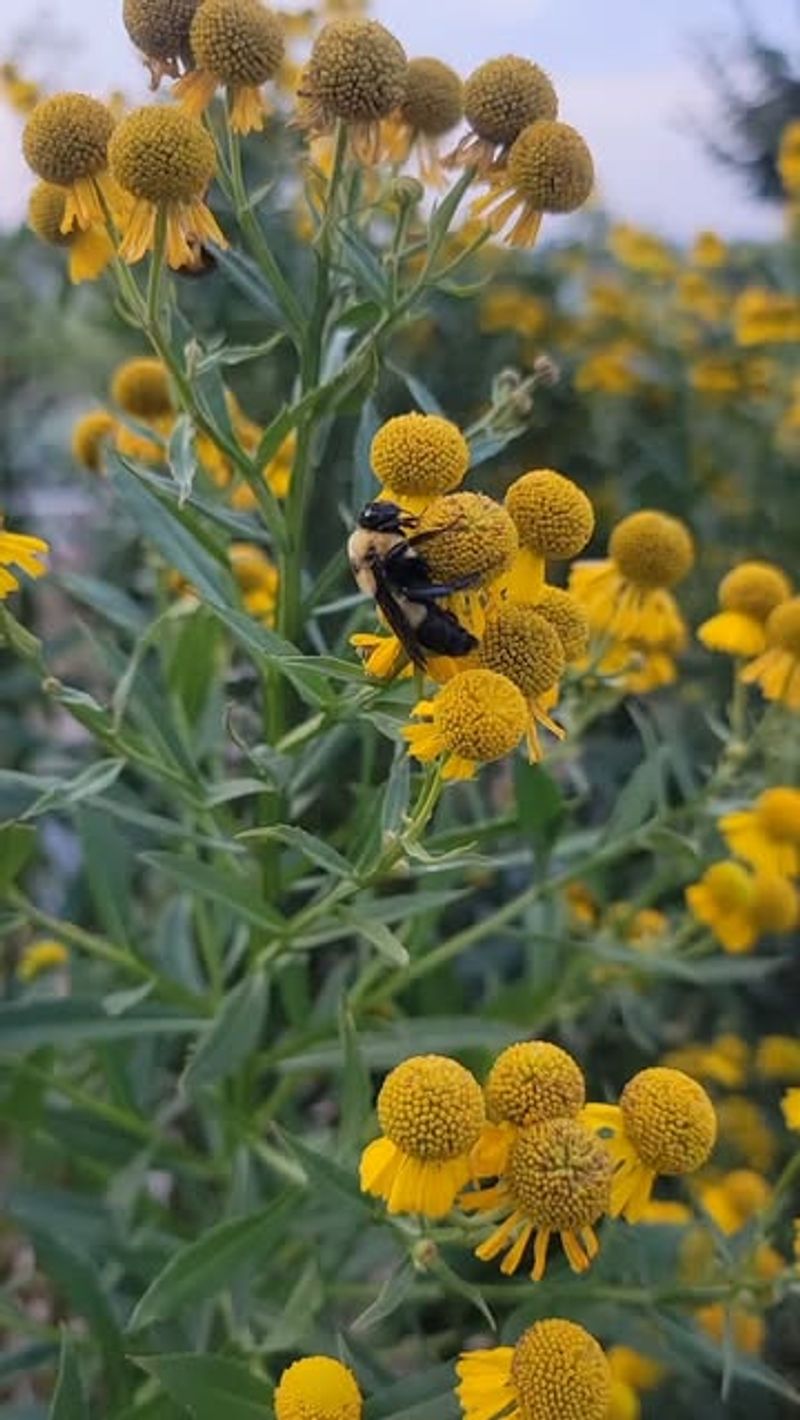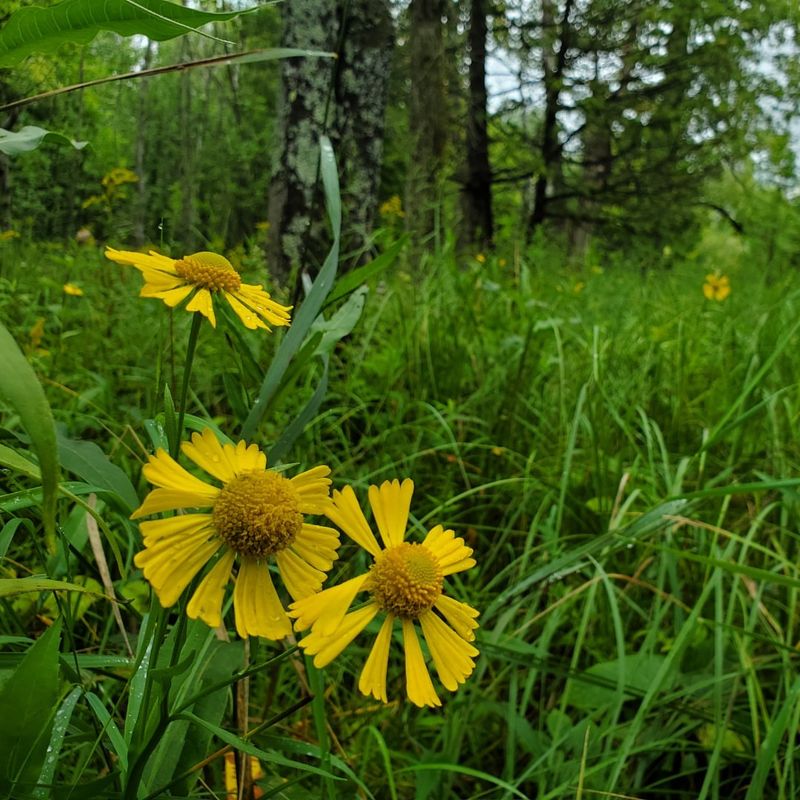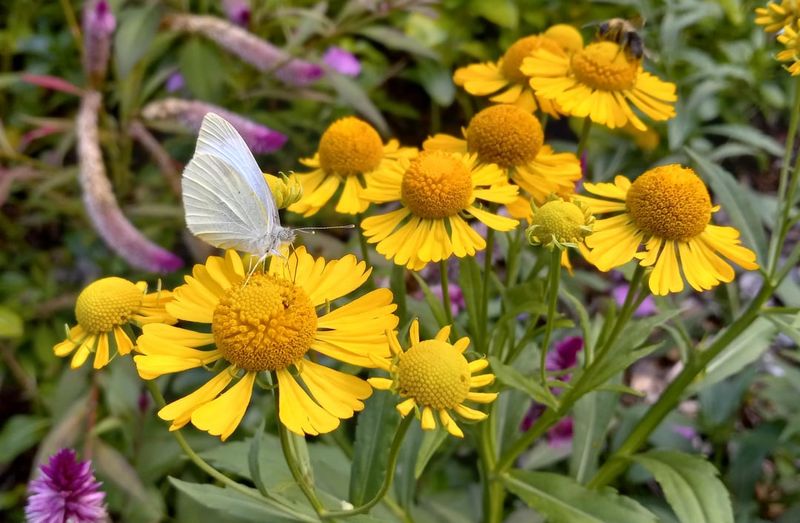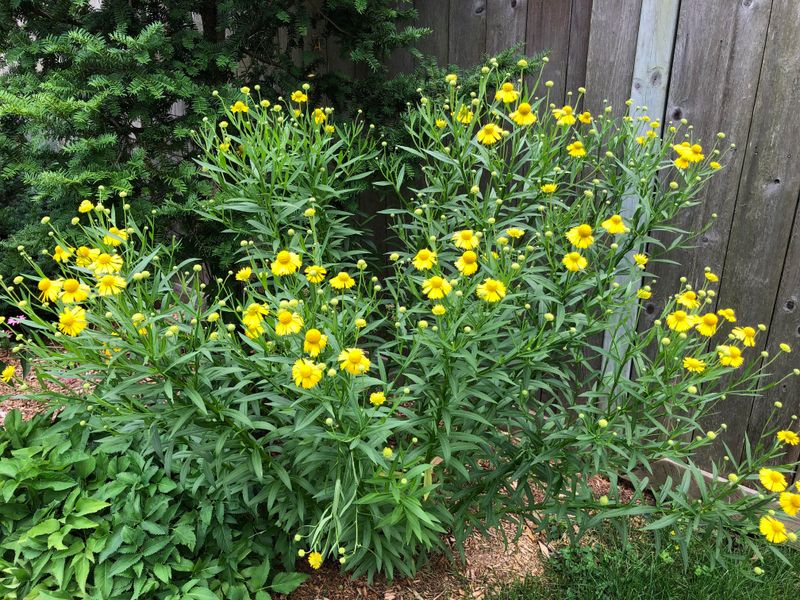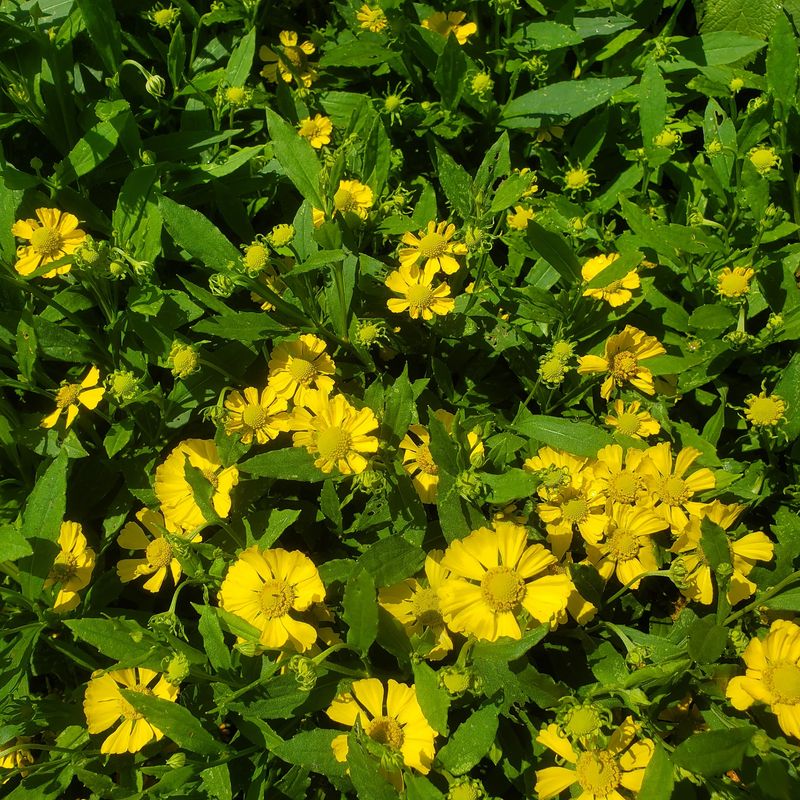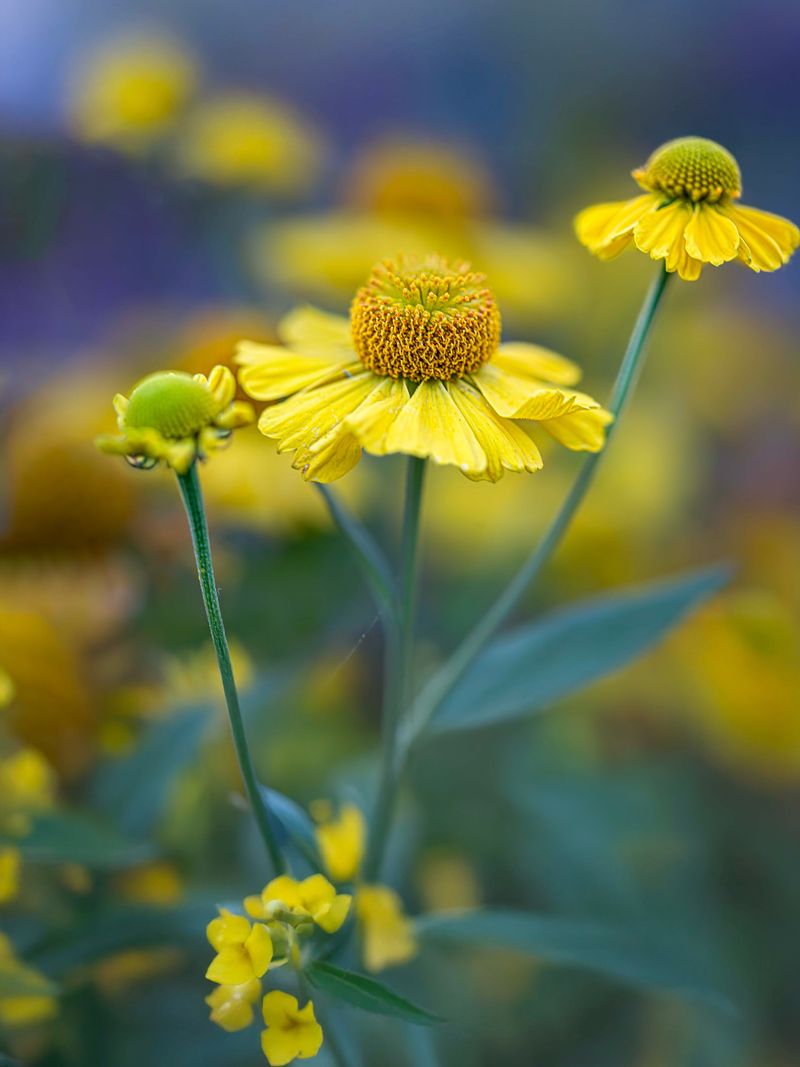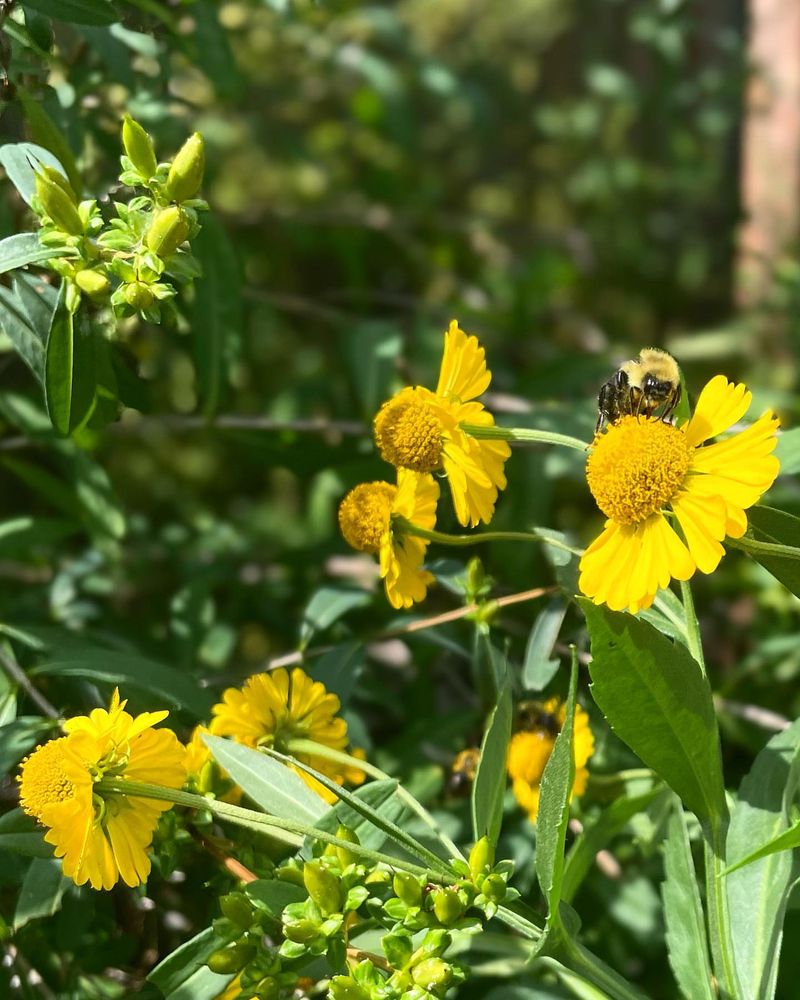Nebraska gardeners face a challenge when summer blooms fade and pollinators struggle to find food. Bold Yellow Helen’s Flower (Helenium autumnale) steps in as a superhero plant during these critical weeks.
This native perennial not only brightens autumn gardens with golden blossoms but also provides essential support for bees, butterflies, and other pollinators when they need it most.
1. Perfect Autumn Timing
Bold Yellow Helen’s Flower hits peak bloom just when most garden flowers have called it quits. Starting in August and continuing through October, these golden blooms fill the late-season gap when pollinators desperately search for food.
The timing couldn’t be better for Nebraska’s climate, where summer heat often scorches earlier-blooming plants. While other flowers wither, Helen’s Flower stands tall, becoming a bustling pollinator restaurant.
2. Drought-Tough Prairie Roots
Nebraska’s unpredictable rainfall patterns don’t faze Helen’s Flower one bit. Native to the region, it evolved deep root systems that tap into underground moisture even during dry spells.
Pollinators benefit from this resilience when other nectar sources shrivel up. For gardeners, this means less watering and maintenance while still supporting local wildlife. The plant’s prairie heritage makes it perfectly adapted to thrive in Nebraska’s challenging conditions.
3. Nectar-Rich Buffet
Each Helen’s Flower bloom serves up an abundance of sweet nectar that keeps pollinators coming back for more. The plant’s daisy-like structure features a prominent central disk packed with tiny individual flowers—each one a miniature nectar cup.
Bees can spend hours working a single plant, gathering crucial energy reserves for winter. Unlike some ornamental flowers bred for looks rather than function, Helen’s Flower hasn’t lost its nectar-producing abilities through cultivation.
4. Landing-Pad Design
Mother Nature designed Helen’s Flower with pollinator-friendly architecture. The wide, flat flower heads create perfect landing platforms for butterflies, bees, and other insects that need stable surfaces for feeding.
Older butterflies with tattered wings particularly appreciate these sturdy platforms. Watch a garden of Helen’s Flower and you’ll notice pollinators spending longer at each bloom compared to more difficult-to-navigate flowers—maximizing energy collection while minimizing effort.
5. Pollen Powerhouse
Beyond nectar, Helen’s Flower produces abundant pollen—a critical protein source for many pollinators. The raised central disk becomes dusted with golden pollen grains that stick to visitors’ bodies.
Native bees collect this protein-rich resource to feed developing larvae. Even in September when pollen sources dwindle, Helen’s Flower keeps producing. Female bees often target these blooms specifically for their pollen quality and quantity during late-season foraging trips.
6. Monarch Migration Fuel
Nebraska sits directly in the monarch butterfly migration corridor, and Helen’s Flower provides crucial refueling stops. These golden blooms appear just as monarchs begin their epic journey to Mexico.
The nectar-rich flowers offer high-energy food that helps butterflies build fat reserves needed for migration. A single garden with Helen’s Flower can support dozens of monarchs daily during peak migration, making it a butterfly gas station on the insect highway south.
7. Native Bee Magnet
While honeybees love Helen’s Flower, Nebraska’s 200+ native bee species absolutely depend on it. Many specialist bees have co-evolved with native plants like Helen’s Flower and prefer its nectar chemistry over introduced species.
Small mining bees, sweat bees, and bumblebees become regular visitors. For these native pollinators, the familiar nectar composition provides optimal nutrition. Their specialized mouthparts and behaviors have adapted specifically to efficiently harvest from these native blooms.
8. Long-Lasting Bloom Cycle
Unlike one-and-done bloomers, Helen’s Flower produces waves of blossoms over many weeks. Individual flowers stay fresh for 7-10 days, while the plant continuously develops new buds throughout late summer and fall.
This extended flowering period means reliable food for pollinators during the critical pre-winter weeks. Gardeners appreciate the sustained color too. With proper deadheading, a single plant can remain in bloom from August through the first hard frost.
9. Winter Seed Buffet
Smart gardeners leave some Helen’s Flower seed heads standing through winter. After pollination, the flowers transform into seed heads that feed birds during Nebraska’s harsh winter months.
Goldfinches, chickadees, and juncos feast on these nutritious seeds when food becomes scarce. The sturdy stems hold up well under snow and ice, creating natural bird feeders. This dual-purpose role supports wildlife year-round, not just during pollinator season.
10. Climate Change Adaptation
As Nebraska’s climate shifts with earlier springs and later frosts, Helen’s Flower demonstrates remarkable adaptability. Its bloom time adjusts to seasonal cues rather than rigid calendar dates.
This flexibility helps bridge potential gaps in the pollinator food calendar caused by climate disruption. When other plants flower too early or fail entirely, Helen’s Flower’s responsive nature ensures pollinators don’t face sudden food shortages. Its evolutionary resilience makes it a climate-smart garden choice.
11. Easy Propagation Spreads Benefits
Helen’s Flower readily produces viable seeds and divides easily, allowing gardeners to spread pollinator support throughout neighborhoods. One established plant can be divided every few years into multiple new plants.
Community garden projects across Nebraska use this trait for pollinator corridors. The plant’s generosity mirrors its ecological role—multiplying and sharing resources. Even beginner gardeners succeed with these low-maintenance natives, creating pollinator patches with minimal effort.
12. Pest-Resistant Powerhouse
While Japanese beetles and other pests ravage many garden plants, Helen’s Flower stands strong thanks to natural compounds in its foliage. These protective chemicals deter most damaging insects without harming beneficial pollinators.
Gardeners appreciate this natural resistance that eliminates the need for pesticides. The plant’s slightly bitter foliage evolved specifically to discourage leaf-munching insects. This chemical defense system allows the flowers to remain pristine and accessible to pollinators.
13. Native Prairie Restoration Hero
Conservation efforts across Nebraska rely on Helen’s Flower as a keystone species in prairie restoration projects. Its presence attracts diverse pollinators that then help establish other native plants.
Prairie restoration specialists plant Helen’s Flower as an ecological anchor. The deep roots help stabilize soil while the flowers jump-start pollinator populations. In recovering grasslands, these bright yellow blooms signal the ecosystem’s returning health and biodiversity.
14. Four-Season Visual Interest
Helen’s Flower offers more than just autumn blooms. Spring brings rosettes of fresh green leaves, summer shows tall elegant stems, fall explodes with golden flowers, and winter features architectural seed heads dusted with snow.
This year-round appeal makes it valuable in Nebraska’s changing landscape. Pollinators benefit from the consistent presence while gardeners enjoy the evolving display. Few native plants provide such continuous visual interest through Nebraska’s dramatic seasonal shifts.
15. Companion Planting Synergy
Helen’s Flower creates powerful partnerships with other late-blooming natives like asters and goldenrod. Together, they form a pollinator paradise greater than the sum of its parts.
Different flower shapes attract diverse pollinator species simultaneously. Gardeners who plant these companions create biodiversity hotspots. The varied bloom heights, colors, and structures form a complete pollinator habitat that supports specialists and generalists alike during the critical pre-winter feeding period.

